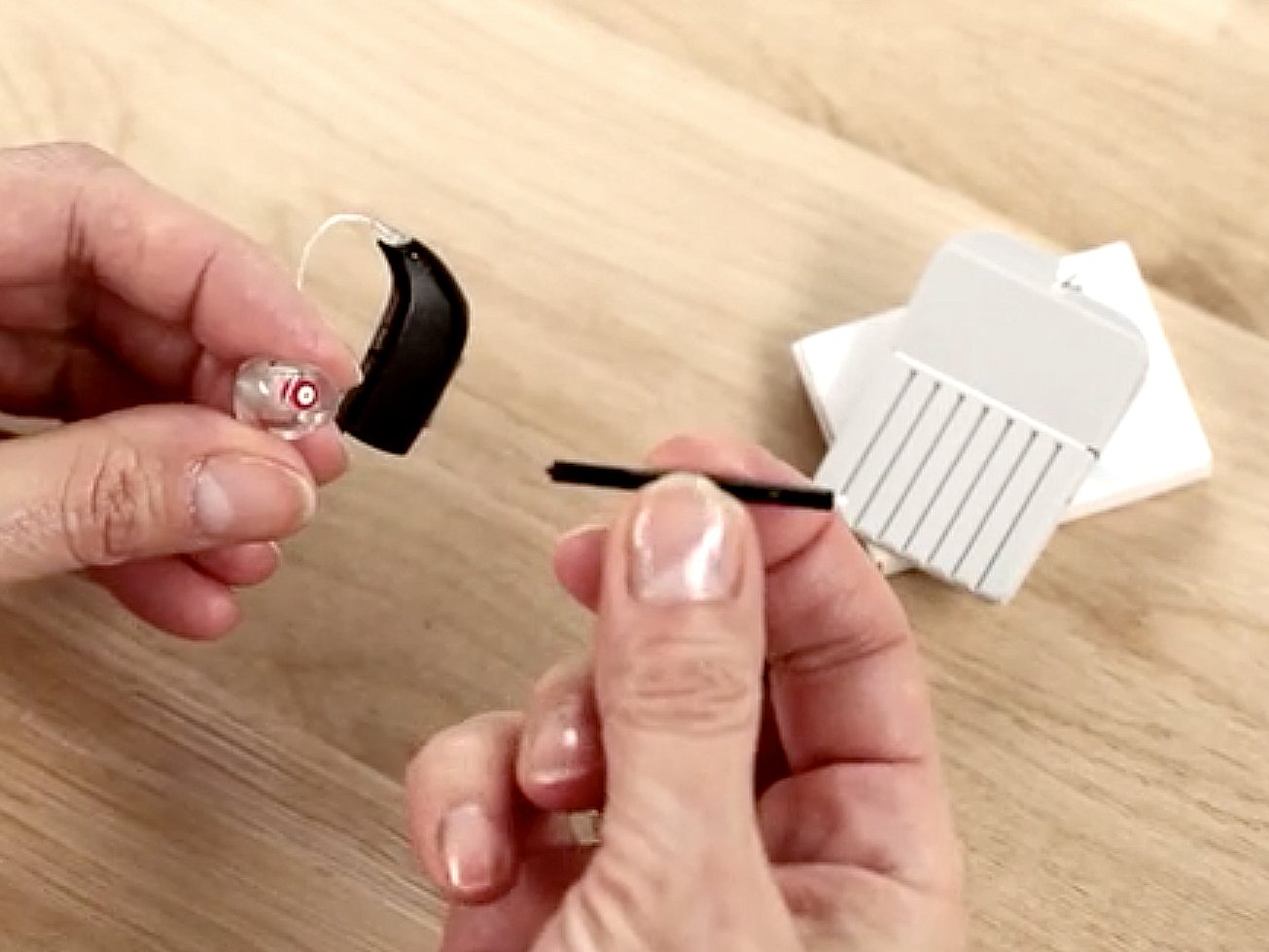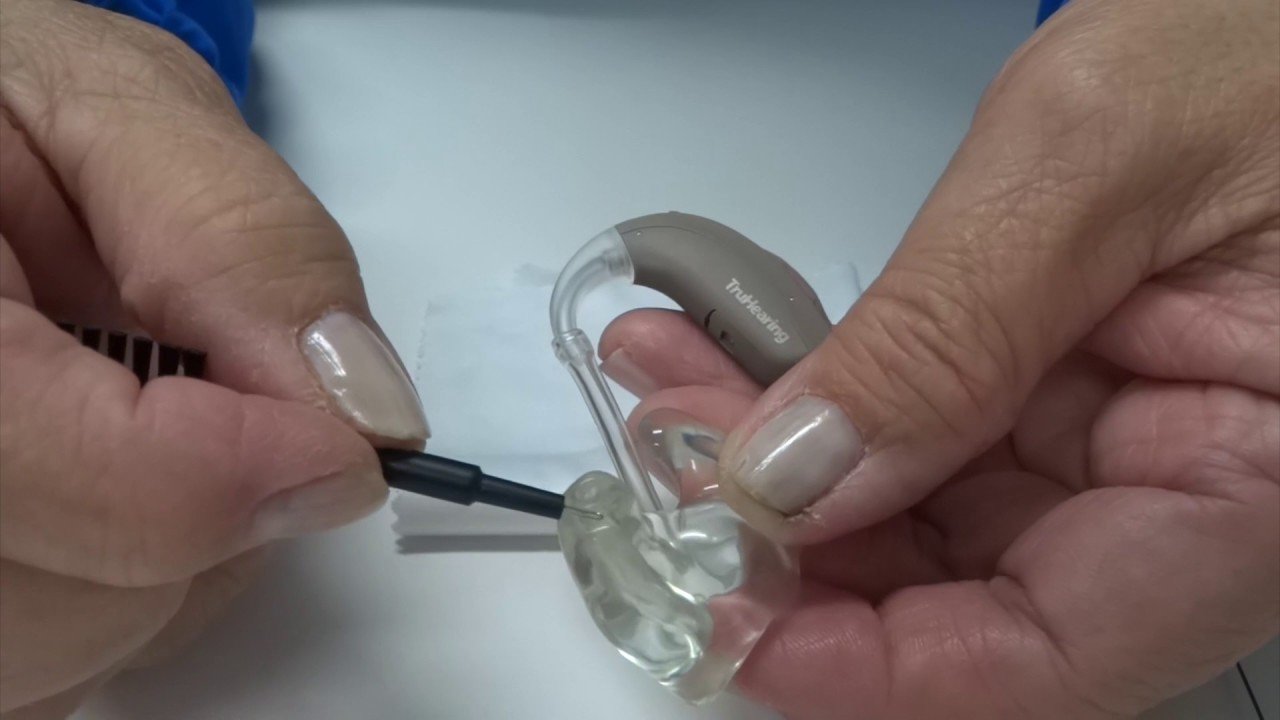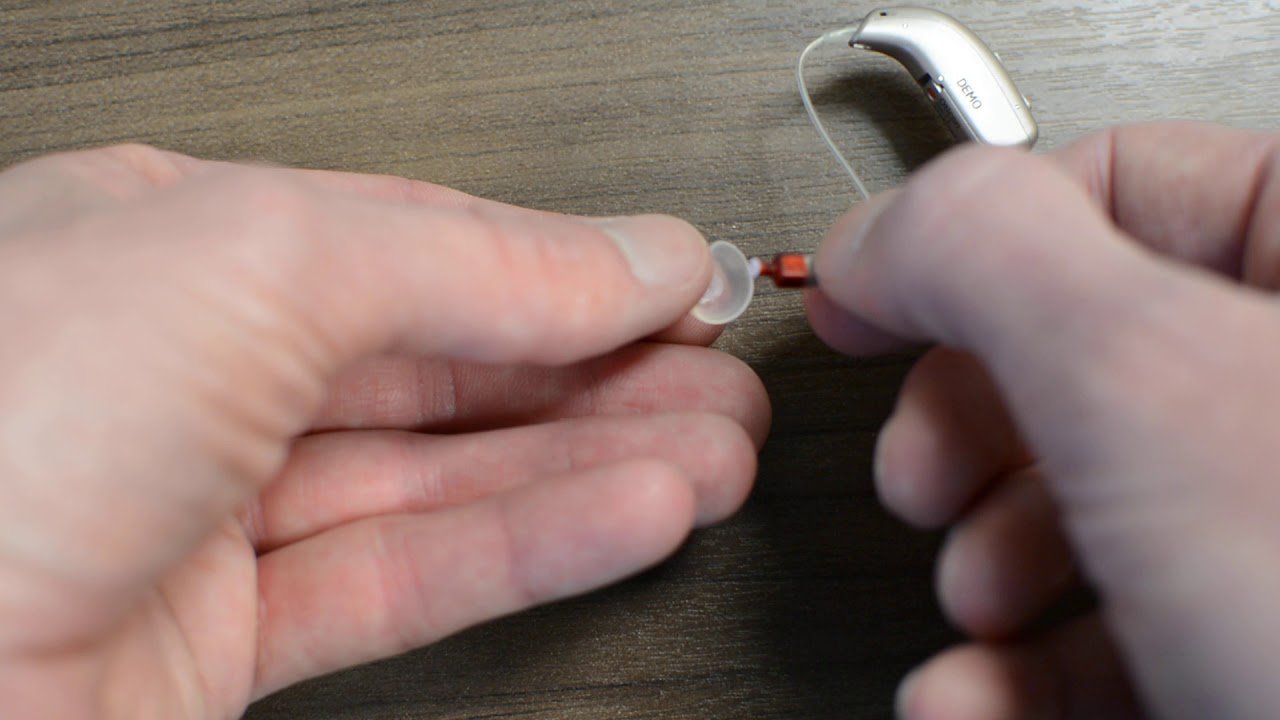Cleaning Tips For Bte Hearing Aids
- First inspect the hearing aid for presence of debris. Remove the debris using a dry and clean cloth or soft brush.
- Detach the ear mold from the attaching hook and clean it.
- For ear molds made of soft material, which tends to stain and discolor over time, clean the material daily and soak it in soapy and warm water once in a week.
- After cleaning let the molds dry fully preferably overnight.
- Avoid using chemicals or alcohol on the hearing aid as it can damage the material.
- It is common for ear molds to develop some odor after using for some time. If the odor is very intense, it indicates presence of infection. In such a case, you should consult the hearing care professional.
- To flush water out from the tubing use bulb blower and let the tubing dry overnight.
How Often Should A Hearing Aid Be Cleaned
Once a day, preferably in the morning, examine your hearing aid for dirt, debris, or other material that might have gotten stuck in the ear molds, dome, or tubing. Use a brush to wipe the entire device.
Once a week, perform a more detailed inspection. Use the wax pick or wire loop to remove wax build-up. Be careful not to use the wax pick near the microphone or receiver. This is also a good time to replace the earmold or dome if needed.
When Should I Replace The Domes
Hearing aid domes, whether open or closed, should be changed every few months. Some audiologists may recommend dome changes every 1-2 months, while others may recommend a slightly longer period of time. Either way, domes need to be changed regularly in order for the sound quality to remain clear. All styles of domes, whether open, closed, or power, can be cleaned in between changes with a small brush or wax pick. Just use the brush regularly to remove wax and debris from the end of the hearing aid.
Also Check: Does B12 Help Tinnitus
Ensure You Have The Correct Cleaning Tools
Firstly, to clean any type of hearing aid, you need the correct tools. We recommend that you have the following:
- A wax pick
- A soft cleaning brush
- A soft cloth
These tools are available separately and you may already have them in your house. If not, you can buy hearing aid cleaning kits that include everything you need. These kits may also have disinfectant wipes that are formulated for hearing aids dont use regular wipes as they might not be suitable, only use ones that have been approved for use with these hearing devices.
How To Properly Clean And Care For Your Hearing Aids

With any investment, there is a certain degree of maintenance required to be sure that money is being well spent and the purchase is well kept. A hearing aid is no different. Certain maintenance items should be used only by the manufacturer or your hearing care professional, but there are many other preventative measures that you can complete regularly to ensure that your hearing aid is at full-functioning capacity!
Below we examine three main causes or hearing aid problems and offer cleaning and care tips to help!
Battling Ear Wax
Ear wax is often described as the hearing aids worst enemy, and rightfully so as the most common cause for hearing aid repairs across the industry. While ear wax is a healthy, normal occurrence in the ear canal, it can create a number of problems for a hearing aid. The ear canal contains not only the solid or soft components of ear wax but also vapor that can migrate deep into the hearing aid where it can become solid and settle on critical mechanical components.
For example, at Starkey Hearing Technologies, an estimated 60 percent of repairs are caused by wax or foreign material getting into the internal components of the hearing device.
What you can do:
Beating Water
While accidental immersion in a bath or swimming pool can happen, preventative measures can help guard from moisture buildup within the device during normal usage.
Avoiding Physical Damage
You May Like: Witch Hazel For Ear Infection
How To Clean In
When cleaning an ITE model, follow these steps:
- Focus your cleaning on the openings in the device including the microphone ports using a soft-bristle toothbrush or a brush provided by your audiologist to clear away built-up wax. Hold the device with the opening you are cleaning facing downward so any loose particles will fall out of the hearing aid instead of staying lodged inside.
- Next, use a wax pick or hook to clear anything out of the holes that didnt come out with the brush.
- Finish by wiping the entire device with a clean, dry cloth or tissue. This will remove debris from the case of the hearing aid.
How To Clean Your Hearing Aids
The following tips apply to all hearing aid models and styles:
- Turn the hearing aid upside down while cleaning ports and openings then any debris dislodged will fall out instead of in
- Open the battery compartment at night it will extend the life of the battery and allow the compartment to air out
- When changing the battery, brush the battery compartment clean
Read Also: How To Connect Phonak Hearing Aids To Iphone
Cleaning Tips For Ric Hearing Aids
Why Is It Important To Look After Your Hearing Aids
Hearing aids are quite an investment. You can expect to get about four or five years out of them, but weve had people that have prolonged that into the six, seven, or eight year mark by looking after them carefully.
Most warranty periods on hearing aids only last three, sometimes four years, and big repairs can cost a lot. Sometimes it makes more sense to upgrade your hearing aids if the warranty has run out or is about to run out because youll be saving money in the long run.
You May Like: What Is God In Sign Language
Wipe Regularly And Store Properly
Good maintenance and regular daily cleaning are imperative to the quality and upkeep of your hearing aid. However, removing the earwax is only half the battle. Wipe your hearing aid down nightly with a soft, dry cloth and dont use abrasive cleaners, water, or alcohol. Store your hearing aid in a cool, dry place away from heat and moisture, and leave the battery door open when you arent using it. You might choose to invest in a hearing aid dryer that can be used overnight to keep your hearing aid away from moisture and potential damage.
How Do You Take Care Of Hearing Aids
So what is this process? How does one clean their hearing aids? Well, the ideal first step is actually preventative using a dehumidifier.
A dehumidifier, or a dryer, is a device that you can store your hearing aids in overnight, and it will eliminate any moisture accumulated over the course of the day. This is absolutely crucial in extending the life of your hearing aid too much moisture can damage the internal components, causing malfunction and requiring repairs.
Dropping your hearing aids into one of these is the best way to maintain them, but how can you otherwise take care of them?
Also Check: How Do You Turn Off Hearing Aid Mode On Iphone
Tip #: Get The Right Tools
Proper hearing aid cleaning starts with getting the right tools to assemble your hearing aid cleaning kit, which will help you combat the two leading causes of hearing aid problems: moisture and wax. Some tools are included with your Miracle-Ear hearing aid purchase, while others can be bought separately.
Recommended tools for cleaning hearing aids:
- Soft, dry cloth – removes moisture and debris
- Pick and brush – removes wax
- Bulb blower – removes moisture from tubing
- Dehumidifier or drying jar – removes moisture overnight
Note: Avoid water or chemical solutions, unless specifically formulated for hearing aids.
Behind The Ear Hearing Aids

To clean a BTE hearing aid device:
- Remove the ear mould from the hook
- Wipe over the ear mould daily and remove any debris
- Once a week soak them in warm, soapy water to remove any discolouration, and allow them to dry overnight
- To remove water from the tubing, use a bulb blower and also allow this part to dry overnight
Recommended Reading: Htc Resound Case
Common Problems With Neglected Hearing Aids
The biggest problem is not cleaning off hearing aids at the end of every night. Earwax and moisture can wreak havoc on a hearing aid, so those are the top two aspects of cleaning to target every day.
To keep the moisture down on a hearing aid with a battery, open the door and let it dry out at night. Also make sure you wipe all the moisture and earwax off so that youre not getting your sweat or wax into those little teeny ports and plugging up the hearing aids.
Care Tips For Your Hearing Aids
To clean hearing aids at home, youre going to want to gather the right tools. A few indispensable items youll want to have handy are a wax pick and brush. Theres also a multi-tool you can get that contains both a brush and a wax loop for thorough cleaning. Earwax that accumulates and isnt cleaned off can damage the receiver over time. Always wash your hands before handling or cleaning your hearing aids. Establish good habits such as putting your hearing aids in after your morning hygiene routine and putting in hair sprays or gels.
Experts recommend that you clean your hearing aids before bedtime. Cleaning them at the end of the day will give them ample time to air out before you put them in again. Chemical wipes and alcohol can damage your hearing aids. Also, take good care of them by avoiding extreme temperatures. For example, avoid having them in your pocket in the cold winter weather or setting them on a table outside in the heat.
Recommended Reading: Hungry Sign Language
How To Clean Custom Hearing Aids
Use The Proper Hearing Aid Cleaning Tools
Over time, earwax accumulates in the opening where the amplifier is, causing muffled sound or feedback. Should it be left to continue to accumulate, it will damage the receiver too. Wax should be carefully removed using the appropriate hearing aid cleaning kit.
A multitool, which contains a soft brush, wire loop and magnet is ideal. Alternatively, a wax pick and brush can also be used for cleaning your hearing aids. Never use wipes that contain alcohol or cleaning chemicals as they can damage the hearing aid.
Recommended Reading: Signs That Say Merry Christmas
Different Kinds Of Hearing Aids
When it comes to cleaning your hearing aids, its good to know what is the best method for each different type or style of hearing aid. There isnt just one set type of hearing aid they come in a variety of different sizes and styles.
For instance, if you suffer mild to moderate hearing loss, then a CIC or a completely-in-canal hearing aid might be your best option if you prefer to wear hearing aids discreetly. These small devices fit inside your ear canal and have even been given the nickname – invisible hearing aids.
They are the smallest style of hearing aid and are composed of a single unit. Because they are so small, they can fit inside your ear canal discreetly however, the smaller model means that there isnt as much room for processing power and battery. This means that while they give the advantage of being discrete, they also are not a good fit for individuals with more moderately severe or profound hearing loss.
The two major styles of hearing aids are:
- Behind-the-ear hearing
- In the ear
What To Avoid While Cleaning
Do not use alcohol or other chemical wipes for cleaning hearing devices as these can damage the hearing device.
When the surrounding temperature is too cold or hot avoid exposing the hearing aids to the extreme temperature. For instance, if you are shoveling snow from the driveway, leave the hearing aids safely inside your house rather than placing them inside your pocket.
Similarly, when you want to use the swimming pool on a hot summer day, keep the hearing aids inside rather than placing them poolside exposing them to the hot temperature.
Recommended Reading: Baby Sign Language Hungry
How And What To Clean Your Hearing Aids With
Cleaning your hearing aids on a daily basis helps to ensure their performance and longevity, and it saves money on repairs. Easy to fit into your nightly routine, these hearing aid cleaning tips will help you to reduce the amount of wax, debris, dust, and other contaminants that could affect your technology.
How to clean your hearing aids depends upon the type of hearing aid you have. For instance, BTE technology contains an earmold that can be submerged in water and cleaned with certain solutions or soap, while that would be detrimental to an ITE device. Ask your hearing care provider what the best practices are for cleaning your specific hearing aid style.
No matter which kind you have, the shell, the receiver, and the microphone are what youll want to focus on.
- Wash your hands and make sure they are dry before cleaning hearing aids.
- Work over a soft surface to prevent losing or breaking anything that might fall.
- Be extra mindful when cleaning, handling each piece with care.
- Turn technology upside down so debris will fall out rather than get pushed back in.
- Do not use a soaking wet cloth, unapproved solutions, or cotton swabs.
- If earwax is something that continues to be an issue, ask your provider about having your ears professionally cleaned.
- NEVER put your hearing aid in water.
How To Clean An Ite Hearing Aid

Follow the steps below to clean your in-the-ear style hearing aid.
Caution: Never use water, alcohol, or chemical wipes to clean an ITE hearing aid.
For a hands-on demonstration of how to clean your ITE hearing aids, watch this video:
Recommended Reading: How To Sign God In Asl
Daily Care Of Your Hearing Aids
Your two goals of cleaning your hearing aids every night are to reduce moisture and remove earwax and debris.
Moisture Open the door of the battery holder to let it dry out at night. Some rechargeable hearing aids come with a moisture removal kit the aids can sit in at night. Wipe any moisture and sweat off the outside of the aid.
Earwax Wipe off any tiny bits of debris or earwax with a soft cloth so it doesnt migrate toward the small ports in the hearing aids and block them. You can also brush bits off with a soft toothbrush.
Well show you how to change your wax guards and domes if you have them.
In The Ear Hearing Aids
To clean an ITE hearing aid:
- The cleaning should concentrate on the openings of the device. This includes the microphone, which should be cleaned using a soft brush provided by your audiologist, or a very soft toothbrush
- Ensure that the area you are cleaning is facing downwards so that the debris you are removing will fall out, rather than potentially blocking the tubing
- Anything that the brush didnt remove should be removed using a wax pick or loop
- Finally, wipe over the entire hearing aid with a clean, dry cloth, or a tissue
Don’t Miss: Sign For Hungry
When Do I Change The Wax Filters
Wax filters are small plastic pieces that are attached to the hearing aid. The aim of these is to prevent wax, debris, and moisture from getting into the receiver of your hearing aid. This is very important. If wax, debris, or moisture does get into the receiver, it could greatly affect the sound quality or cause the hearing aid to malfunction.
It is difficult for an audiologist to advise a patient how often to change their wax filters. This is because each patient is different. Some people need to change them almost every month. Other people may not need to change their wax traps for several months. It all depends on the amount of wax present in the ear canal. Some patients get a lot of earwax while others do not. On average, people need to change their wax filters every month in our experience.
Recommended Reading: How To Pair Phonak Compilot With Tv Link